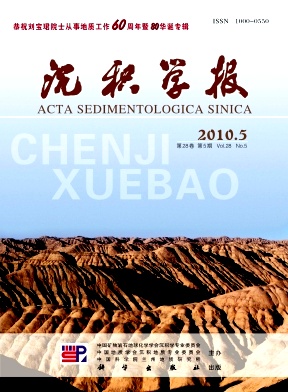A New Sedimentary Model for the Qiangtang Basin
- Received Date: 1900-01-01
- Rev Recd Date: 1900-01-01
- Publish Date: 2010-10-10
-
Key words:
- Qiangtang Basin
Abstract: The newlydiscovered paleoweathering crust sediments are developed beneath the continental volcanic rocks, sedimentaryvolcaniclastic rocks, and alluvialdiluvial sandstones and conglomerates from the Upper Triassic Nadigangri Formation, and diachronously overlapped upon the Upper Triassic(?) Xiaochaka Formation and its underlying strata including the CarboniferousPermian strata in the Qiangtang Basin, indicating a sedimentary gap between the Nadigangri Formation and its underlying strata. These volcanic rocks, sedimentaryvolcaniclastic rocks and alluvialdiluvial sandstones and conglomerates from the Nadigangri Formation deposited above the paleoweathering crust represent the onset of the Qiangtang Basin sediments during the Mesozoic. The SHRIMP zircon UPb isotopic dating gives the ages of 219.5±2.1 Ma and 219±2 Ma for the basalt and granodiorite from central Qiangtang, and 216.8±2.1 Ma and 217.3±2.5 Ma for the vitric tuff and crystal tuff from the Nadigangri Formation in the Shenglihe and Wanghuling areas in the Qiangtang Basin. All these age determinations imply that the onset of the Mesozoic Qiangtang Basin should be traced back to the Late Triassic. The deposition went through the continental to marine sedimentary overlap during the early evolution of the Mesozoic Qiangtang Basin. The sedimentary overlap started from the alluvialdiluvial facies and accompanied by magma intrusion, volcanic eruption and pyroclastic deposition. On the whole, the deposition displays a deepeningupward transgressive sequence, characteristic of a passive marginal rift basin.
| Citation: | WANG Jian. A New Sedimentary Model for the Qiangtang Basin[J]. Acta Sedimentologica Sinica, 2010, 28(5): 884-893. |






 DownLoad:
DownLoad: